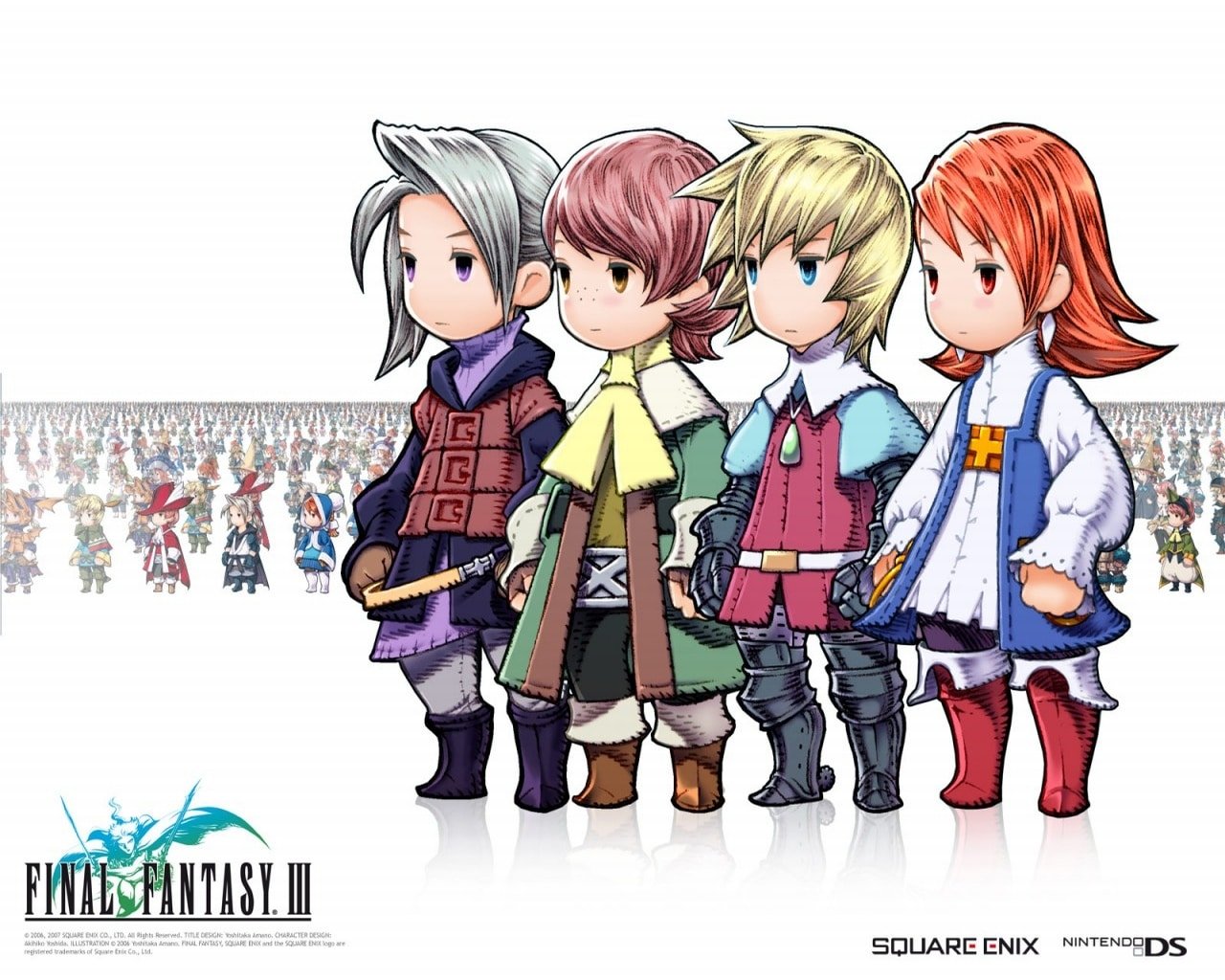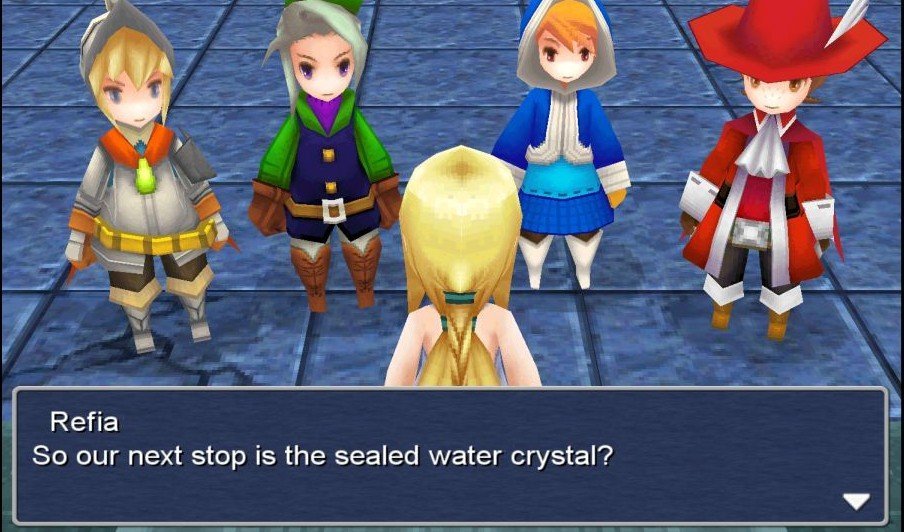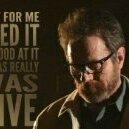Hold on! This is the third in the series - If you are going in order, check out Final Fantasy II first.
Ah yes, the third installment of Final Fantasy – the one that didn’t officially make it to the US until 2006. There is a little confusion with the real Final Fantasy III and the one we got for the SNES – which was actually Final Fantasy VI. (Soon…soon, I will write about you.) With the release of the real Final Fantasy III on DS, everything made sense. Just to make things clear, when the SNES Final Fantasies were released in the USA, the number system went as follows: 2, 3 and the 7 for the PSone. If your head is spinning, it’s okay. The real Final Fantasy III has since been released on several different platforms, and there are numerous fan translations of the original.
Like the previous entry, this game holds no connection to the previous two save a few series archetypes. Again, the game continues on with a familiar formula in plot, but has completely different battle mechanics to learn all over again. However, one big issue lies within the plot; depending on which copy you pick up, this game could go very differently. Regardless of any differences between the remakes and translations, one thing is for sure – our journey starts with four orphans on a journey to save the world...again Let’s dive in!
Firsts and Redos
Final Fantasy III gives us three firsts for the Final Fantasy series: The Job Class System, Summoners, and Moogles. We'll focus more on the job system in the game play section, but this installment introduces us to two franchise staples. Summoners are a playable job class, but they are not necessarily a main focus of the story as they tend to be later. Moogles, on the other hand, have brief and cute introduction. They, too, play a small roll, but like the summoner, they become essential in later entries.
While the first two Final Fantasies have been re-released with minor changes that add depth to the game play, fix system glitches, and clarify translation. Final Fantasy III's remake changes the plot. The original translation has four orphan boys exploring a cave after a recent earthquake, while the Nintendo DS gives each of the characters a name and a background: Luneth, Arc, Refia and Ingus. I'll speak briefly on both, but let’s stick with the original for now.

PLOT: The Original
Like the first entry of the series, Final Fantasy III begins with a prophecy prediction that tells the story of four elemental light crystals on a floating continent. It tells of how a past civilization tried to control their power unsuccessfully as it disrupted the balance of the world. The disturbance called forth the warriors of the four dark crystals to save the civilization; though they were successful, they were too late to save the people. So their story is retold, for history has a tendency to repeat itself.
 This is where the events that follow change depending on which copy of the game you have. Either way, the four heroes accidentally happen upon a buried light crystal, and they are told they have to save the world. Nefarious beings have begun to stir and the threat of impending doom is hovering over them as the prophecy predicted. The four heroes discover that there is a whole world outside their own and must go on numerous quests to find the crystals, gain their power, and defeat the Cloud of Darkness.
This is where the events that follow change depending on which copy of the game you have. Either way, the four heroes accidentally happen upon a buried light crystal, and they are told they have to save the world. Nefarious beings have begun to stir and the threat of impending doom is hovering over them as the prophecy predicted. The four heroes discover that there is a whole world outside their own and must go on numerous quests to find the crystals, gain their power, and defeat the Cloud of Darkness.
The game explores all different regions, castles, and dungeons. Periodically, your party gains a fifth member who tags along for a short time for story line purposes, but doesn’t actually participate in battle. At the very end, these 'fifth' party members have a small part to help bring about the downfall of the villain, and balance is ultimately restored to the world.
Remaking a Classic
There are several changes in the beginning of the DS version of Final Fantasy III. Players start off with Luneth only, and he continues through the early events of the game finding each additional party member as he goes. Also, a female character is added to the heroes, while the original uses four boys. When Luneth gathers his crew, they are warped away to the light crystal, which in turn lends them its power. In this version, there is added depth to the characters by giving them much needed backstory. After the crystal gifts the new light warriors with job classes, the game continues past character introductions and on like the original.
 Crossing The Streams
Crossing The Streams
As far as the original game, the plot is very basic and the main party characters are incredibly wooden. However, the remake takes steps to remedy that situation by engaging the audience and creating individual characters rather than the four cut-and-paste heroes from the original. The remake doesn't expand on the plot all that much and we are left with one of the simplest stories in the franchise; however, considering this was the last entry on the Famicom system, there is a lot to be said about the size of this plot.
This quest took our heroes all over the place: a floating continent, under the sea, the desert, across mountains, through swamps, and more. While there really wasn't more to the story other than 'Oh, you're a light warrior - you can do the thing!' there were many more tasks to overcome. Clearly, the story wasn't the focus as it reuses ideas and cliche tropes from the previous entries, but it did have charm. Final Fantasy III's story was a lighthearted turn from the war-torn story of its predecessor, and is one of the easier in the series to play.
Game Play
Like the previous franchise entries, Final Fantasy III uses a turn-base combat system with some rather exciting upgrades. First and foremost, this game has an auto-targeting ability for all melee attacks, so your characters won't simple hit the air after targeting an enemy that is already dead. Also, there is an indicator that lets players see which enemies they have targeted.
[caption id=attachment_2899" align="alignleft" width="480] Hmm...am I going to be the Ninja and Sage, or the Ninja and Sage...[/caption]
Hmm...am I going to be the Ninja and Sage, or the Ninja and Sage...[/caption]
The experience system also makes a return - but there is also a new and improved feature: the job class system. This system allows players to customize their party by choosing from available 'job classes' like Onion Knight, Thief, Dragoon, Black Mage, Summoner, Scholar and more. A player gains 'capacity' points in battle, which allows them to switch between job classes in order to increase levels and stats. Each class has its own special features and skills, such as the Thief, who can steal and unlock magic doors. The classes have their own specific commands, weapons, armor, accessories and magic spells. The longer a character is a job class, the more powerful they become.
While the system works very well, it isn't without some flaws. While there are many different classes to choose from, there are some job classes that are downright useless. Black Mages, White Mages, and Knights are much better to use than the Viking, Scholar, or Summoner classes. While there are many job classes to choose from, it is clear that some are just way better than others and it lowers the replay value.
Final Thoughts
Final Fantasy III signifies the end of the Famicom Era. While we didn't get this installment until much later, it is still a fun game that fixes the errors of its predecessors and makes a brand new experience. Also, I'll have to say this is the entry that Nobuo Uematsu really understood the capabilities of the Famicom. His music only gets better from this point on. Finally, it introduces the Final Fantasy series to the job class system. (Without it, there would never be a Final Fantasy Tactics! That's a world I just don't want to live in.) The plot itself wasn't ground breaking, but the game is still fun and worth the time. While the NES/Famicom era comes to a close, so comes the SNES era of Final Fantasy games -some noted, arguably, as the best in the series.

 Crossing The Streams
Crossing The Streams


Recommended Comments
There are no comments to display.